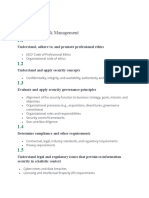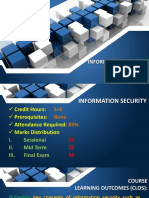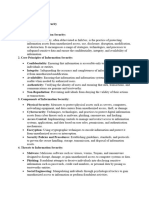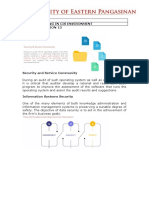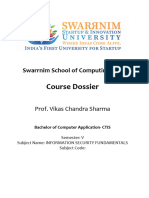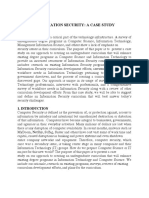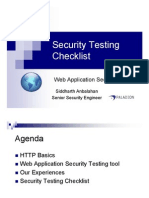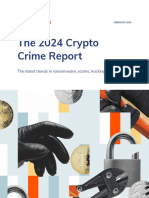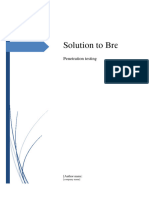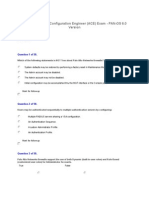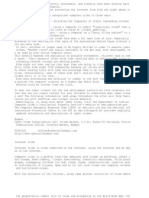0% found this document useful (0 votes)
60 views6 pagesIntroduction To Information Systems Security
The document provides a comprehensive overview of information systems security, emphasizing the importance of protecting information assets and understanding key concepts such as the CIA triad and risk management. It covers various aspects including security threats, access controls, network security, secure software development, incident response, identity and access management, legal considerations, and emerging trends. The content is structured to guide organizations in implementing effective security measures and maintaining compliance with regulations.
Uploaded by
aamakureyaCopyright
© © All Rights Reserved
We take content rights seriously. If you suspect this is your content, claim it here.
Available Formats
Download as DOCX, PDF, TXT or read online on Scribd
0% found this document useful (0 votes)
60 views6 pagesIntroduction To Information Systems Security
The document provides a comprehensive overview of information systems security, emphasizing the importance of protecting information assets and understanding key concepts such as the CIA triad and risk management. It covers various aspects including security threats, access controls, network security, secure software development, incident response, identity and access management, legal considerations, and emerging trends. The content is structured to guide organizations in implementing effective security measures and maintaining compliance with regulations.
Uploaded by
aamakureyaCopyright
© © All Rights Reserved
We take content rights seriously. If you suspect this is your content, claim it here.
Available Formats
Download as DOCX, PDF, TXT or read online on Scribd
/ 6












